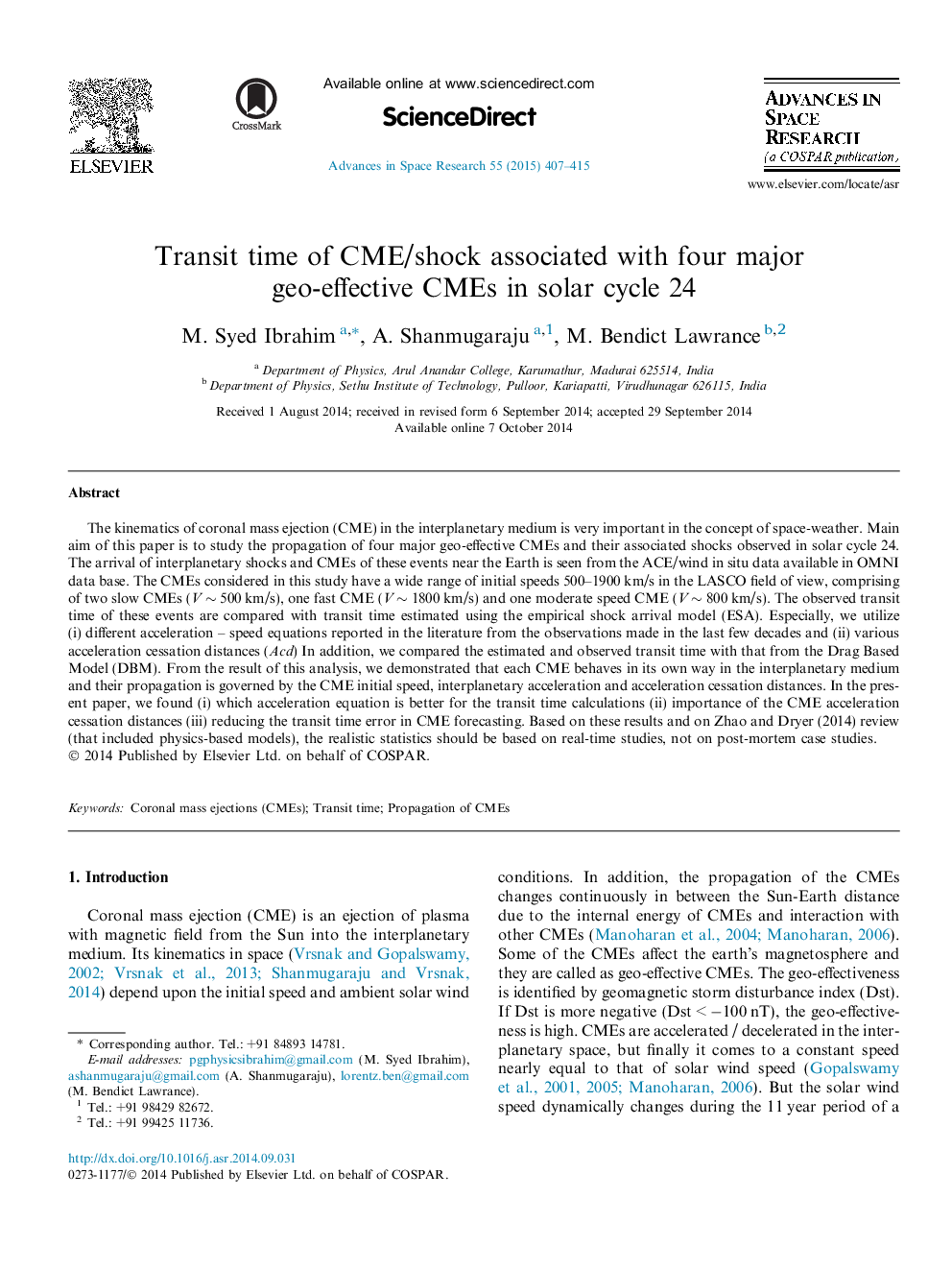| کد مقاله | کد نشریه | سال انتشار | مقاله انگلیسی | نسخه تمام متن |
|---|---|---|---|---|
| 1764141 | 1020043 | 2015 | 9 صفحه PDF | دانلود رایگان |

The kinematics of coronal mass ejection (CME) in the interplanetary medium is very important in the concept of space-weather. Main aim of this paper is to study the propagation of four major geo-effective CMEs and their associated shocks observed in solar cycle 24. The arrival of interplanetary shocks and CMEs of these events near the Earth is seen from the ACE/wind in situ data available in OMNI data base. The CMEs considered in this study have a wide range of initial speeds 500–1900 km/s in the LASCO field of view, comprising of two slow CMEs (V ∼ 500 km/s), one fast CME (V ∼ 1800 km/s) and one moderate speed CME (V ∼ 800 km/s). The observed transit time of these events are compared with transit time estimated using the empirical shock arrival model (ESA). Especially, we utilize (i) different acceleration – speed equations reported in the literature from the observations made in the last few decades and (ii) various acceleration cessation distances (Acd) In addition, we compared the estimated and observed transit time with that from the Drag Based Model (DBM). From the result of this analysis, we demonstrated that each CME behaves in its own way in the interplanetary medium and their propagation is governed by the CME initial speed, interplanetary acceleration and acceleration cessation distances. In the present paper, we found (i) which acceleration equation is better for the transit time calculations (ii) importance of the CME acceleration cessation distances (iii) reducing the transit time error in CME forecasting. Based on these results and on Zhao and Dryer (2014) review (that included physics-based models), the realistic statistics should be based on real-time studies, not on post-mortem case studies.
Journal: Advances in Space Research - Volume 55, Issue 1, 1 January 2015, Pages 407–415